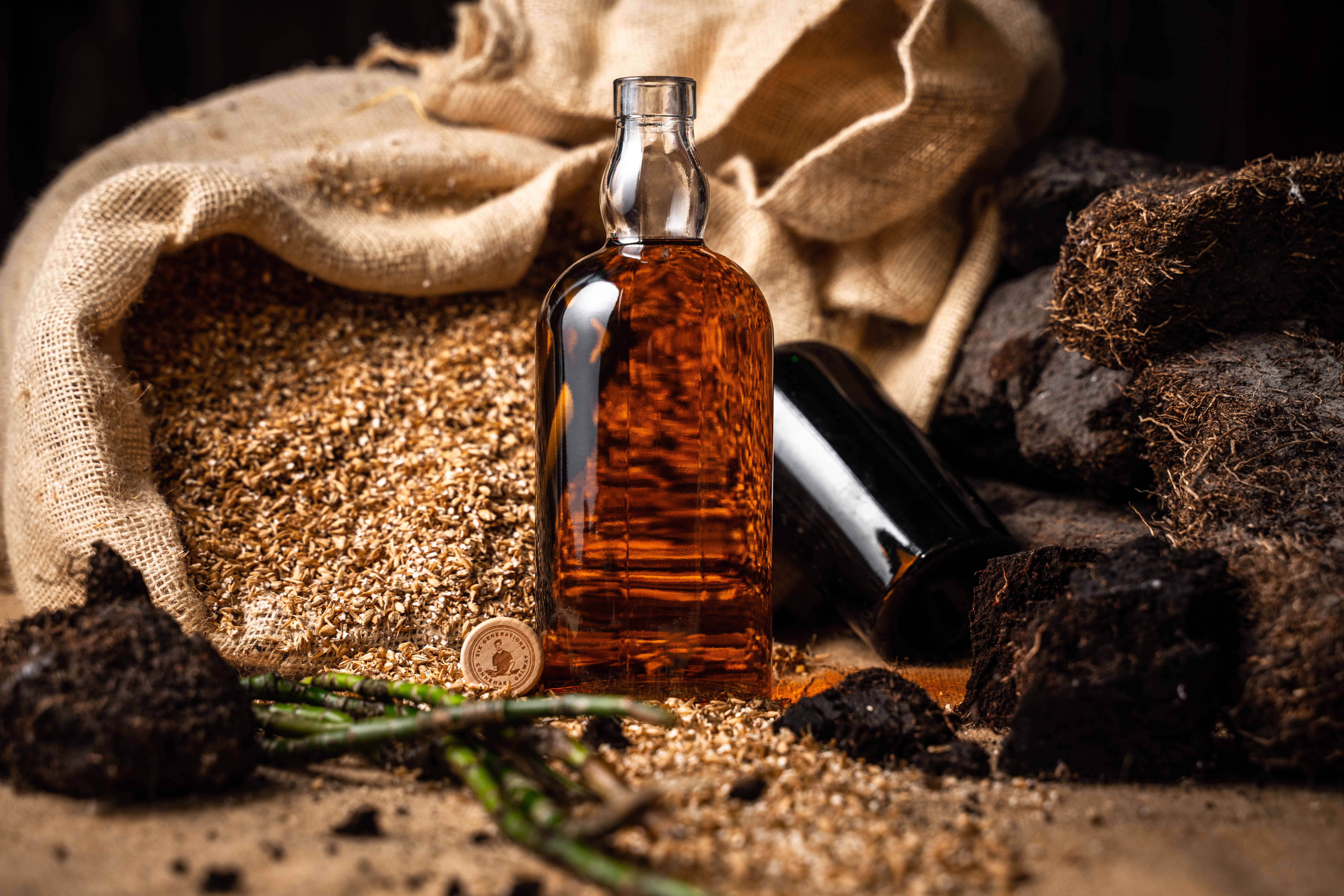As an aperitif, in a cocktail, in a ‘medicinal’ hot toddy, or as a digestif, there are many ways to enjoy Irish whiskey.
“Normalement”, as we say in Belgium, this would be the part of Together where we write about wine. Even though Ireland is now recognised as a wine-producing country by the European Union, let’s just say that it is not yet renowned for making the red and white stuff, but pretty well known for the amber and black.
There are a handful of doughty wine growers around Cork who are making a go of it; among them, the Thomas Walk Vineyard near Kinsale is one of the most established. Walk, who is German, developed a varietal which bears his name “Amurensis Walk – Rondo”; an early and fast-ripening grape that is resistant to mildew and which suits Ireland’s climate. Walk is very committed to sustainability and this tough grape doesn’t require spraying – it produces a unique full-bodied ruby-red wine, with notes of dark cherries and blackberries.
That’s not to say that Ireland hasn’t made its mark on the wine world. The Irish diaspora have proven quite adept winemakers, when given the right climatic conditions.This is particularly the case in Australia and the US. In an article published in The Irish Times, the Australian Ambassador to Ireland Gary Gray described the extraordinary development of Australian wine as “an untold gem in the middle of Ireland’s diaspora story… The Wine Geese, as they became known, a grouping of people who left Ireland and over time, came to almost singular importance in the French, Spanish and Australian wine industries.”
Travelling further back in time, the prestigious Lynch-Bages vineyard (1855 Grand Cru Classé), owes its name to one of “the Wild Geese”, John Lynch who left Galway for the Médoc in 1691. His descendants, in particular Michel Lynch, understood the importance of terroirs, selected the best grape varieties and systematically drained the soils and invented new tools to cultivate the vines; but I digress.
Ireland’s Eau de Vie
Whiskey is an anglicisation of uisce beatha (pronounced: ishka ba-ha), which translates as the water of life. The first written reference to whiskey distillation came in the Red Book of Ossory, written in Ireland in 1324. This was nearly two centuries before the first written records of whisky distillation in Scotland, making Irish Whiskey the oldest whiskey tradition in the world.
“Whiskey is an anglicisation of uisce beatha, which translates as the water of life”
The Red Book of Ossory is believed to have been mainly written by Richard de Ledrede who served as Bishop of Kilkenny during the Black Death, which ravaged the historic city; it is thought that the bishop developed the distillation of whiskey as part of his medicinal and pastoral response to the crisis.
Irish whiskey is a protected geographic indication. You can only label a product as Irish whiskey if it has been fully distilled and matured in wooden casks on the island of Ireland for at least three years. It is officially the fastest-growing spirit in the world over the past decade, with 150% growth in sales.
| There are four distinct styles of Irish WhiskeyPot Still Whiskey is a style of whiskey unique to Ireland, made from a mixed mash of malted and un-malted barley, distilled in copper pot stills.
Malt Whiskey is made from 100% malted barley, distilled in pot stills. Grain Whiskey is made from mixed mash containing predominantly maize or wheat, continuously distilled in column stills. Blended Irish Whiskey is any whiskey containing two or more of the above component whiskeys which have been matured for at least three years in wooden casks. |
“It is officially the fastest-growing spirit in the world over the past decade, with 150% growth in sales”
Visiting Ireland?
Why not drop into a distillery, there are 44 across Ireland. You can pick up an IrishWhiskey360° Passport as a way to record your visit to each one. Passports are available to be picked-up at participating distilleries. At each one you can collect a stamp marking your visit. To become an ‘IrishWhiskey360° Champion’ you’ll need a stamp from each region.
Irish Whiskey Awards 2022
One way Irish whiskey is distinct from Bourbon or Scotch is that producers can use a variety of different types of barrel for maturation, with chestnut, cherry and acacia wood being popular choices, but increasingly you see more exotic choices, such as those that have been used for wine, sherry or rum. Scotch and Bourbon producers can only use oak. By way of example, the winner of the Irish Whiskey of the Year 2022 award went to the Echlinville Distillery, based in Kircubbin, just outside Belfast, for their Dunville’s 21-year-old Palo Cortado Sherry Cask Finish (Cask 1197).
“Irish whiskey is distinct from Bourbon or Scotch is that producers can use a variety of different types of barrels”
Most Irish whiskeys sold globally are blends and the industry produces some of the world’s most sophisticated and complex blended whiskeys. Blends are often considered a smoother drink associated with a richer and more complex depth of flavour. The winner in the category of ‘Blended Age Statement’ in 2022 was Jameson 18-year-old. The winner for ‘Blended Limited Release’ was Teeling Small Batch Collaboration – Stiggins’ Fancy Pineapple. The Teeling small batch is a collaboration between Teeling Whiskey and Plantation rum. Teeling have aged their flagship small batch in ex-bourbon casks for six years before it is then married in the finest rum casks from Plantation Rum for 12 months to create an Irish whiskey bursting with pineapple fruit, rich spices, and honey sweetness.
For the more traditional single malt drinker there’s Croithlí, Coillín Darach Oak Series – Quercus Robur. But if you like your whiskey to taste like a turf fire there’s Shortcross Peated Single Malt.
Whatever whiskey you prefer, whether it’s in an ‘Old Fashioned‘ cocktail, or paired with some smoked Irish salmon on soda bread, or drawn out with a little water, in Irish crystal, at the end of long day: Slainté!
www.thomaswalk-vineyard.com
www.irishwhiskey360.com











